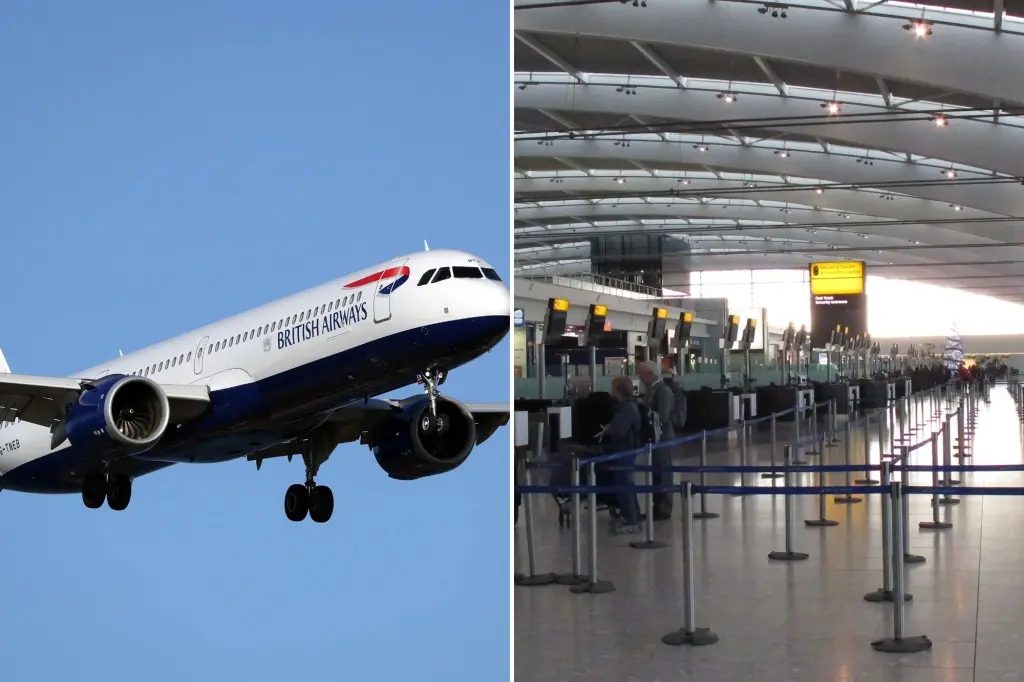Tragedy in the Skies: British Airways Flight Diverted After Passenger’s Death
A Solemn Return Journey Cut Short
A British Airways flight traveling from London to Nigeria turned tragic when a distinguished passenger, Air Vice Marshal Osita Obierika of the Nigerian Air Force, passed away mid-journey. The octogenarian former military commander had been returning home after receiving cancer treatment in the United Kingdom when he fell gravely ill approximately two and a half hours after takeoff. What should have been a routine overnight flight from Heathrow Airport to Abuja’s Nnamdi Azikiwe International Airport instead became a somber emergency situation, forcing the pilot to make the difficult decision to divert the aircraft to Barcelona’s El Prat Airport. The flight, which departed London at 11 p.m. on Sunday and was scheduled to arrive in Nigeria by 5 a.m. Monday, would never complete its intended journey with all passengers alive.
Ripple Effects of an In-Flight Emergency
The announcement of the medical emergency and subsequent diversion reportedly created a wave of anxiety throughout the cabin, affecting other passengers deeply. Most notably, a pregnant woman aboard the flight suffered a medical episode apparently triggered by the distressing situation unfolding around her. While specific details about her condition remain unclear, her situation further complicated an already challenging circumstance for the flight crew and fellow travelers. The dual medical emergencies transformed what should have been a routine overnight journey into a complex crisis management situation at 30,000 feet, testing the training and composure of the British Airways staff as they worked to address both the primary emergency and its cascading effects.
The Airline’s Response to Crisis
In the aftermath of these events, British Airways issued an apology to all passengers affected by the unexpected diversion and delay. “Passengers are advised to expect an email with more information and can reach out to the airline’s Live Chat feature for support,” company representatives stated, according to the Daily Trust newspaper. “British Airways acknowledges the inconvenience and thanks passengers for their patience and understanding.” Beyond words of regret, the airline took practical steps to minimize disruption by arranging a replacement aircraft to continue the journey to Abuja. This replacement flight was initially scheduled to depart Barcelona at 2:00 p.m. local time and arrive in Nigeria by 7 p.m., though the departure was eventually delayed by nearly an hour, pushing the expected arrival time to 5:45 p.m. Nigerian time.
The Deceased: A Distinguished Military Career Cut Short
The passenger whose life ended aboard the aircraft, Air Vice Marshal Osita Obierika, was no ordinary traveler. As a high-ranking former commander in the Nigerian Air Force, his death represents not just a personal tragedy but the loss of a distinguished military figure returning to his homeland after seeking medical treatment abroad. Nigerian media reports indicated that Obierika had been in the United Kingdom specifically for cancer treatment, making his journey one of hope for recovery and return to familiar surroundings. Instead, his passing occurred in the confined space of an aircraft, far from both his treatment facilities and his home country, adding layers of logistical and emotional complexity to an already sorrowful situation.
Aviation Protocols for In-Flight Deaths
This incident highlights the complex protocols that airlines follow when passengers die during flights. According to aviation blog Aviation A2Z, when a passenger dies in flight, the urgency for an emergency landing actually decreases, contrary to what one might expect. This somewhat counterintuitive approach allows the flight crew to select an airport better equipped to handle the situation rather than making an immediate diversion to the nearest available runway. A similar situation occurred earlier in the summer when a Turkish Airlines passenger died during a flight from Turkey to California. In that instance, the crew initially planned to divert to Keflavik Airport in Iceland but ultimately continued to Chicago O’Hare Airport, likely following this same protocol of seeking the most appropriate facility rather than the closest one.
The Human Element of Air Travel Emergencies
What makes this incident particularly poignant is how it reveals the vulnerability inherent in air travel despite all modern safety measures. When hundreds of people are sealed in a pressurized tube miles above the earth, medical emergencies take on a different dimension. There is no quick access to comprehensive medical facilities, and the close quarters mean that one person’s crisis becomes a shared experience for all present. The pregnant woman whose health was affected by the stress of the situation embodies this interconnectedness. Similarly, the other passengers—who boarded expecting a routine overnight flight and instead witnessed the final moments of a fellow traveler’s life—experienced a profound reminder of human fragility. While aviation safety statistics remain impressive, this incident serves as a sobering reminder that not all in-flight emergencies involve mechanical failures or weather conditions; sometimes, they stem from the most fundamental aspect of the human experience: our mortality.


